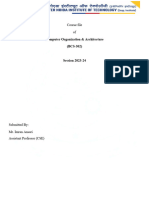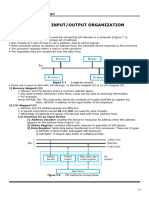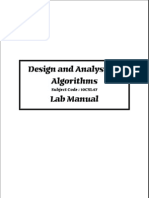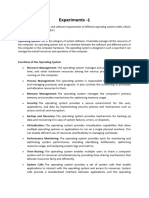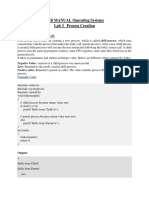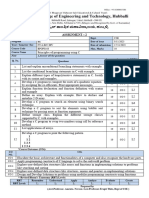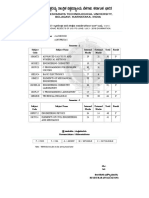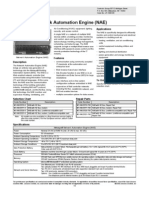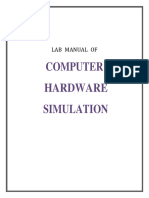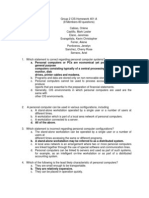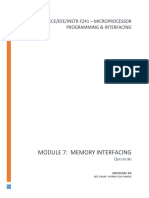0% found this document useful (0 votes)
1K views4 pagesSteps For Handling Page Fault - Easy Notes
The document summarizes the steps involved in handling a page fault when using virtual memory. When a process references a page that is not loaded in memory, a page fault occurs. This triggers a series of steps: 1) validate the memory address, 2) if invalid, terminate process, 3) if valid, find a free frame, 4) page in the required page from disk, 5) update the page table and change the invalid bit, 6) restart the faulting instruction once the page is loaded. Locality of reference means multiple faults are rare in practice.
Uploaded by
anuCopyright
© © All Rights Reserved
We take content rights seriously. If you suspect this is your content, claim it here.
Available Formats
Download as PDF, TXT or read online on Scribd
0% found this document useful (0 votes)
1K views4 pagesSteps For Handling Page Fault - Easy Notes
The document summarizes the steps involved in handling a page fault when using virtual memory. When a process references a page that is not loaded in memory, a page fault occurs. This triggers a series of steps: 1) validate the memory address, 2) if invalid, terminate process, 3) if valid, find a free frame, 4) page in the required page from disk, 5) update the page table and change the invalid bit, 6) restart the faulting instruction once the page is loaded. Locality of reference means multiple faults are rare in practice.
Uploaded by
anuCopyright
© © All Rights Reserved
We take content rights seriously. If you suspect this is your content, claim it here.
Available Formats
Download as PDF, TXT or read online on Scribd
/ 4



